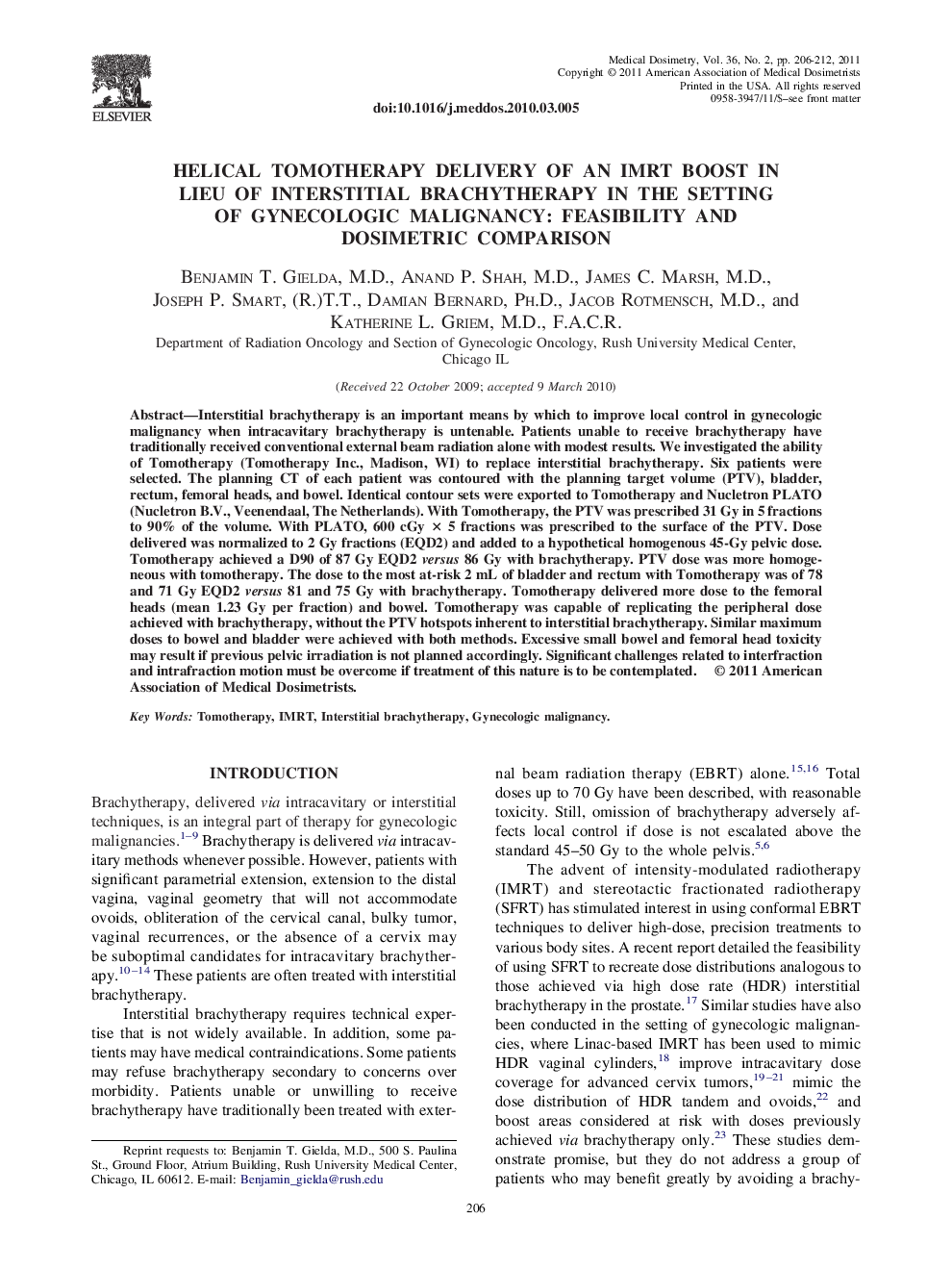| Article ID | Journal | Published Year | Pages | File Type |
|---|---|---|---|---|
| 1882088 | Medical Dosimetry | 2011 | 7 Pages |
Abstract
Interstitial brachytherapy is an important means by which to improve local control in gynecologic malignancy when intracavitary brachytherapy is untenable. Patients unable to receive brachytherapy have traditionally received conventional external beam radiation alone with modest results. We investigated the ability of Tomotherapy (Tomotherapy Inc., Madison, WI) to replace interstitial brachytherapy. Six patients were selected. The planning CT of each patient was contoured with the planning target volume (PTV), bladder, rectum, femoral heads, and bowel. Identical contour sets were exported to Tomotherapy and Nucletron PLATO (Nucletron B.V., Veenendaal, The Netherlands). With Tomotherapy, the PTV was prescribed 31 Gy in 5 fractions to 90% of the volume. With PLATO, 600 cGy à 5 fractions was prescribed to the surface of the PTV. Dose delivered was normalized to 2 Gy fractions (EQD2) and added to a hypothetical homogenous 45-Gy pelvic dose. Tomotherapy achieved a D90 of 87 Gy EQD2 versus 86 Gy with brachytherapy. PTV dose was more homogeneous with tomotherapy. The dose to the most at-risk 2 mL of bladder and rectum with Tomotherapy was of 78 and 71 Gy EQD2 versus 81 and 75 Gy with brachytherapy. Tomotherapy delivered more dose to the femoral heads (mean 1.23 Gy per fraction) and bowel. Tomotherapy was capable of replicating the peripheral dose achieved with brachytherapy, without the PTV hotspots inherent to interstitial brachytherapy. Similar maximum doses to bowel and bladder were achieved with both methods. Excessive small bowel and femoral head toxicity may result if previous pelvic irradiation is not planned accordingly. Significant challenges related to interfraction and intrafraction motion must be overcome if treatment of this nature is to be contemplated.
Related Topics
Physical Sciences and Engineering
Physics and Astronomy
Radiation
Authors
Benjamin T. M.D., Anand P. M.D., James C. M.D., Joseph P. (R.)T.T., Damian Ph.D., Jacob M.D., Katherine L. M.D., F.A.C.R.,
